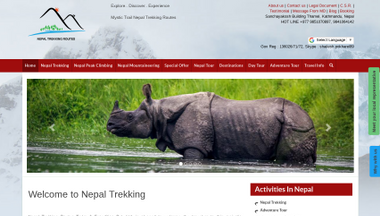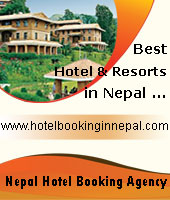On May 21st 2009 at 7.30 am Anna Baranska reached the summit of Mount Everest (8848m). She was the 5th Polish female on the top of the highest mountain in the world (after Wanda Rutkiewicz, Anna Czerwinska, Martyna Wojciechowska and Agnieszka Kiela-Palys), but the first one to ascend the Northeast ridge.
Previous story:
– Mt Everest – North Face International Expedition 2009, part 1.
– Mt Everest – North Face International Expedition 2009, part 2.
Today continuation of this story:
My Everest – Mt Everest North Face International Expedition 2009, part 3.
Author : Anna Barańska
I am happy that I realized what I had planned, that is I became the first Polish female on Mount Everest ascending the North Face, especially as my professional career is not related to mountaineering at all. The most difficult preparation and work on that ascent took place in Warsaw and included working on relations with my family, finding time in my schedule as a professional (advisor in a corporate finance boutique) and a mother. The effort at the mountain was only a pleasure and satisfaction and additionally a proof that motivation is more important than the actual physical condition. I did not expect that the summit would be that accessible considering all my reservations. For me, Mount Everest was approximately 20,000 m high.
After all, my observation is that success of reaching the highest peak of the world is more and more dependent on financial resources. Himalayas commercialize every year and this is visible. So is the fact that you can almost buy the ascent regardless of obvious health problems. In this meaning Himalayas are lowering.
In my view, the climbing itself does is not a search for solitude (contrary to a common opinion that climbers look for it), it was rather a strategic game with many people around: a climbing partner, an agency team, Sherpas, multi-person groups on fixed ropes.
Moreover, the mountains have been stripped off their original mysticism since climbing became the work for some people; a trend which I regret. However, without such people my own activity in Himalayas would have been much more limited. Out of our 22-member group, the summit was reached by four people, including one who died on the descent and one with severe frostbites. It appears that the low success ratio results from the fact that especially Mount Everest is relatively frequently approached by people with fantasy and ambitions but lacking preparations in terms of climbing experience. Physical condition and sport results achieved in lowlands do not guarantee success and what really counts is the ability to acclimatize.
In addition, I wished that my few-week expedition had not caused such fierce resistance from my family resulting from exchanging the traditional role of mother and father – typically, it’s a father who leaves and mother waits for him and takes care of a baby. I would like it to be accepted normally. Regardless, I would like to dedicate my success to children of people who are passionate about extreme sports – their parents realize wonderful and ambitious plans, make their decisions in unpredictable conditions, but they still wish to be good parents. It is difficult to balance.
The most important experience is that so far I treated Himalayas as a way to prove my own strength, realize my ambitions, see my life from another perspective, but I ignored potential price of these experiences. Mount Everest brought me so close to death – Piotr Morawski at the beginning of the expedition, then Veslaw and Frank, whom I knew almost four years and who was about my brother’s age. During this expedition I spent relatively much time with him talking about plans, future, and family. All this disappeared with the news that he had not return to Camp III. Mount Everest’s North Face indeed proved to be the North one.
* Mount Everest – description of the North Side (www.alanalarnette.com):
From BC to ABC it is about 12 miles (22km) of rugged hiking on boulders, ice and snow. The route follows the Rongbuk Glacier until it merges with the Eastern Rongbuk Glacier. ABC is on the northwestern moraine of East Rongbuk Glacier, under the slopes of Changtse Mountain. It normally takes 2 days for the first trip to ABC, then 1 day after acclimatization. ABC is the primary base for North Ridge climbers during expeditions.
North Col (Camp I) is at 7,000m. The route starts on scree (loose rocks) then leads through snow followed by increasingly steep slopes up to 60 degrees. Climbers use crampons and fixed ropes from that point onwards. It takes between 4 to 7 hours to reach the North Col depending on acclimatization and weather.
Camp II at 7,650 m initiates the “high camps”. The route is usually in snow but can be rocky since this section is known for strong winds. At almost 8,000m, most climbers now sleep with supplemental oxygen. The climb is extremely windy and the tents are on small rock ledges due to limited area. Climbers will take about 3 to 5 hours to reach Camp II.
Camp III is a short rest stop on the way to the summit for most climbers. At 8,300m, you do not want to spend a lot of time here. Climbers will have some food and water, perhaps take a short nap and start for the summit around 10:00 pm. The Northeast Ridge is a few hundred feet above Camp III.
The Northeast Ridge represents the most difficult climbing section on this route. There are three “steps” or rock climbs along the way. The first Step is difficult at this altitude but the second Step is the most challenging and requires a 10-foot rock climb to a 30-foot vertical wall. This is where the famous Chinese ladder is located and helps climbers a lot. However, this often is the source of bottlenecks which can bring a summit push to a compete stop. The third Step is another straightforward rock climb which becomes challenging at this altitude (nothing is easy anymore). Climber now spends the next hour climbing the steep snowfields of the Summit Pyramid. The Summit Ridge is short (500′) but narrow with 10,000′ drop-offs on both sides leading directly to the Everest Summit. At this point climbers have spent 8 to 10 hours to summit. It will take another 4 to 6 to return to Camp III.
The success ratio (summits to all climbers) is approximately 20%, while on the South Face it is around 50%. There are more fatal accidents as well.
In the Spring 2009 season, I was one of the only three women who reached the top of Mount Everest.
Anna Barańska – (born 8th September 1976) – Polish mountaineer, climber of two eight-thousanders. The first Polish woman on the North Face of Mount Everest, climbed on 21st May 2009.
The first Polish woman on the North Face of Mount Everest, climbed on 21st May 2009.
She started her mountaineering adventure in 2000 by climbing Rysy from the Slovak side. The next climbings were as follows: Gerlach 2650 m – June 2000; Triglav 2864 m – September 2001; Mont Blanc 4807 m – August 200 ; Elbrus 5642 m – unsuccessful summit trial in August 2003; Lenin’s Peak 7210 m by the normal route – June 2004.
In 2005 Anna reached the top of Cho Oyu 8201 m in Tibet by the normal route with Piotr Barabas on September 28th.
* See also:
– Anna Barańska: The first Polish woman on the North Face of Mount Everest.
* Related Links:
– Pierwsza Polka, która zdobyła Everest od północy : Anna Barańska.
– Polish famous climbers – The golden decade of Polish Himalayan mountaineering.
– International Everest 8848m. North Face Expedition Spring 2009
* Previous story :
– Interview with Bernadette McDonald.
– Piotr Pustelnik: Przesuwanie granicy akceptowalnego ryzyka.
– Kinga Baranowska and Piotr Pustelnik new expedition – ANNAPURNA DREAM Expedition 2010.
– Himalaya 2010 climbing season: Tibet Closed as Spring Season Begins!
– The Gear Junkie Profiles Seven Summiteer.
– Interview with Mike Farris: Alone on Everest.
– March and April Climbing Events by American Alpine Institute.
– Interview with Anne-Mari Hyryläinen: The First Finnish Woman on Everest?
– Everest 2010: South Side Update from IMG’s Eric Simonson.
– Everest 2010: North Side Update from an Expert – Jamie McGuinness.
– The Great Himalaya Trail Set To Open Next Year!
– Everest — Gear For The Expedition.
* Polish Himalayas – Become a Fan
** zapraszam na relacje z wypraw polskich himalaistów.
Filed under: Anna Barańska, Climbers, Expedition, Himalayas, Travel | Tagged: Anna Barańska, Chomolungma, Climbers, Everest, Everest Base Camp, Expedition, Himalayas, Manuel Pizarro, north side, Sagarmatha, summit day, Tibet, Travel | 2 Comments »

































